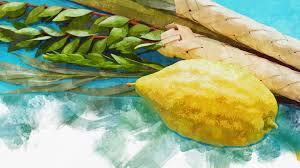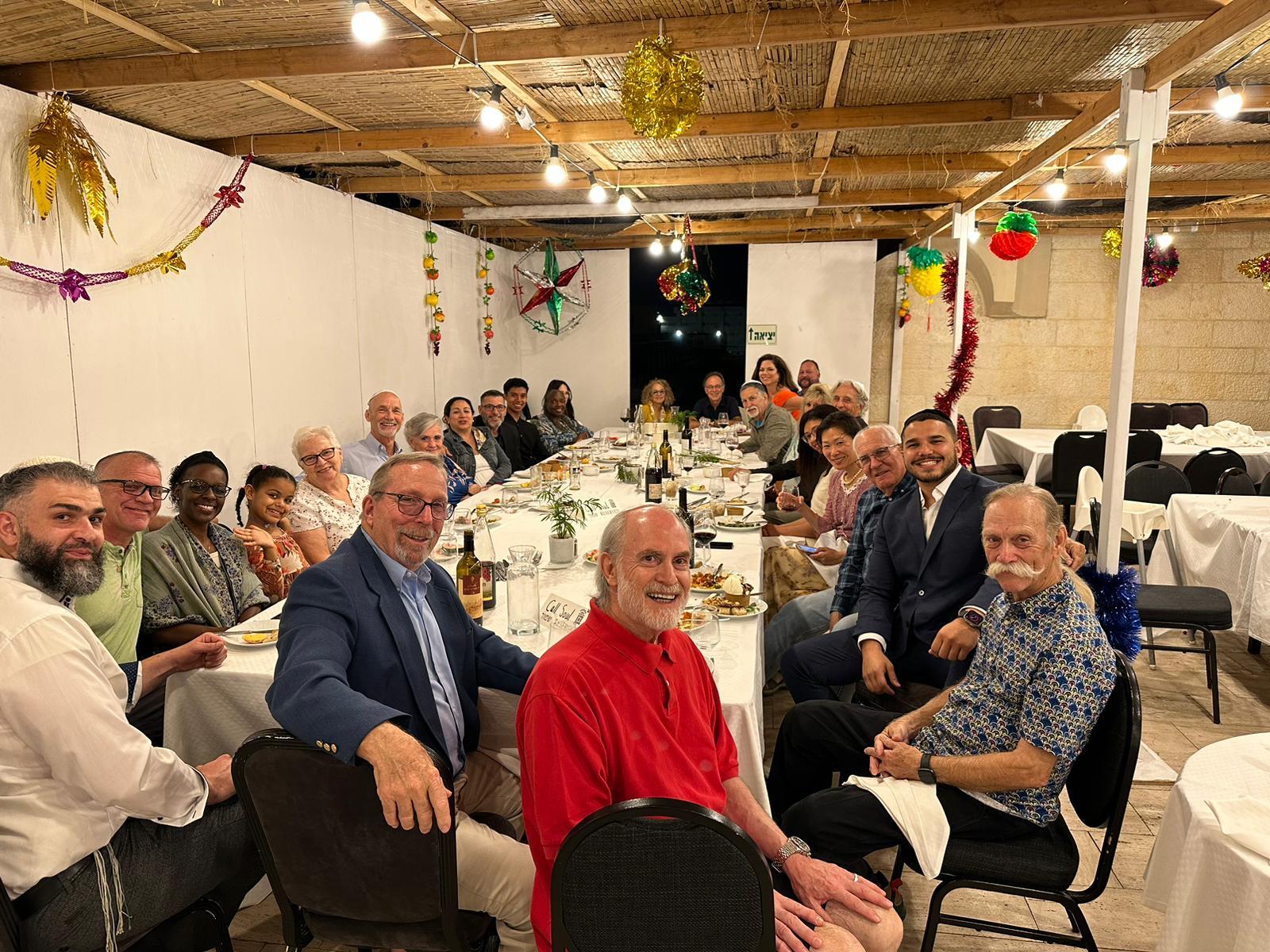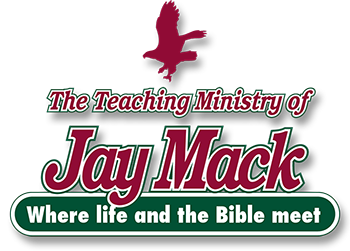The Hag Sukkot Offering
29: 12-34
The Hag Sukkot offering DIG: What memories and feelings would be associated with living in booths? What would God want Isra’el to remember about their wanderings in the wilderness? How are the Sabbath and Sukkot similar? What was the purpose of the goat offering? How did the Jewish tradition of the pouring of the waters come about? What was so special about the seventh day?
REFLECT: Given the significance of this feast to Isra’el, why do you think Yeshua chose to reveal Himself on the last and greatest day of the Feast? When you look back on your life, has God met you more often during “wilderness” excursions, or at “feast” times? Why do you think that is? What do these lasting memories make you want to do now? How can you use this to strengthen your faith in God?
Hag Sukkot will be fulfilled by the Messianic Kingdom.
The last of the pilgrimage festivals in the Jewish calendar is the Festival of Sukkot. What is interesting about the three major “pilgrimage feasts” (see the commentary on Exodus, to see link click Eh – Three Times a Year Celebrate a Festival to Me) is that each required the firstfruits of the various harvests to be offered at the Temple/Tabernacle, but for different crops. Passover required the firstfruits of the barley harvest (see the commentary on Leviticus Ea – Rasheet); the Feast of Weeks required the firstfruits of the wheat harvest (see Leviticus Ec – Hag Shavu’ot); and the Feast of Sukkot required the firstfruits of the olive and grape harvest. As a result of the firstfruits being embedded in these three major pilgrimage festivals, the Feast of Firstfruits itself is not included in the restatement of the feasts here in Numbers 28 and 29.673

This passage instructs the priests how to properly prepare for Sukkot. The first day (29:12-16): On the fifteenth day of the seventh month (Tishrei) ADONAI commanded the Israelites to have a holy assembly and treat it like a Sabbath Day. He said: You are not to do any kind of ordinary work, and you are to observe the Feast of Sukkot to ADONAI for seven days. For seven days all Isra’el was to live in booths and rejoice before the LORD with four species. According to long standing tradition, the four species are the palm branch, willow and myrtle branches and a citron fruit. The rabbis developed 326 rules and regulations concerning the four species. In Temple times they were brought to the Temple and incorporated into the worship service for Sukkot, but since they are not Temple sacrifices, they are not Temple dependent. It marked the firstfruits of the Fall harvest. Because Sukkot follows Yom Kippur, it is considered to be a time of rejoicing following the affliction of the Day of Atonement.
The four species are still taken and waved before YHVH today. This is the customary way it is done. The palm, willow and myrtle are bundled together and held vertically in the left hand and the citron is held in the right. They are placed together. Facing east, the blessing is made, “Blessed are You LORD our God, King of the Universe, who has sanctified us with His mitzvot and commanded us to take the palm branch.” Then the four species are waved before ADONAI in six directions: east, south, west, north, up and down. This ritual is usually performed each of the seven days of the festival.674
You are to present a ‘Olah Offering (see the commentary on Leviticus Ao – The ‘Olah Offering: Providing Access to God), an offering made by fire, bringing a pleasing aroma to ADONAI. It is to consist of thirteen young bulls (the number of which declined by one bull each day), two rams, fourteen male lambs without defect in their first year, with their Grain Offering (see Leviticus Ap – The Minhah Offering: Assuring People of God’s Acceptance) – fine flour mixed with olive oil, six quarts for each of the thirteen bulls, four quarts for each of the two rams, and two quarts for each of the fourteen lambs; also one male goat as a Purification Offering (see Leviticus Aq – The Chatta’th Offering); in addition to the continual ‘Olah and Minhah Offerings and their drink offering.
On each of the seven days of Sukkot, a number of additional (mussaf) sacrifices are offered. Except for the number of bulls, it is simply double the number for all the other festivals: two rams and fourteen lambs for an ‘Olah Offering each day. On the Sabbath, the continual ‘Olah Offering was doubled to indicate the double portion of Shabbat. The same symbolic value is illustrated by the doubling of the Sukkot mussaf offerings. Rather than one ram and seven lambs, as was offered on all the other monthly and annual appointed times, the mussaf of Sukkot came from two rams and fourteen lambs – a double portion. Thus, we learn that Sukkot is to the festivals, what Shabbat is to the weekdays; just as the Sabbath is the climax of the week, Sukkot is the climax of God’s appointed times.675
All the offerings would be a pleasing aroma, an offering made by fire to ADONAI. The remark that those sacrifices were to be without defect reminds us how much more will the blood of the Messiah, who through the eternal Holy Spirit offered Himself unblemished to God, cleanse our consciences from acts that lead to death, so that we may serve the living God (Hebrews 9:14). The purpose of the Chatta’th Offering goat is explained in the tractate Shavu’ot of the Mishnah (see the commentary on The Life of Christ Ei – The Oral Law). The goat was a fail safe measure. It was meant to provide atonement for those who inadvertently desecrated the Tabernacle by coming near to God in a condition of ritual impurity.676
The pouring of the waters (29:16): The Oral Law points out three seemingly superfluous Hebrew letters in the passages about the Sukkot additional (mussaf) offerings (b.Taanit 2b, Sifrei 150 and Rashi on Numbers 29). Ordinarily, the word for its drink offering is spelled v’niskeihem, which means its drink offering. That is how it is spelled in 29:16, 22, 25, 28 and 34. However, in verse 18 it is spelled, v’niskeihem, which means their drink offering. Then in verse 31, there is an extra letter yod in the word, rendering it v’niskeyah.
On the second day (29:17-19): you are to present twelve young bulls, two rams, fourteen male lambs in their first year, without defect; with the Minhah and drink offerings for the bulls, rams and lambs, according to their number, in keeping with the rule; also one male goat as a Chatta’th Offering; in addition to the continual ‘Olah Offering, its Minhah Offering and their drink offerings.
On the third day (29:20-22): you are to present eleven bulls, two rams, fourteen male lambs in their first year, without defect; with the Minhah and drink offerings for the bulls, rams and lambs, according to their number, in keeping with the rule; also one male goat as a Chatta’th Offering; in addition to the continual ‘Olah Offering with its Minhah and drink offerings.
On the fourth day (29:23-25): you are to present ten bulls, two rams, fourteen male lambs in their first year, without defect; with the Minhah and drink offerings for the bulls, rams and lambs, according to their number, in keeping with the rule; also one male goat as a Chatta’th Offering; in addition to the continual ‘Olah Offering with its Minhah and drink offerings.
On the fifth day (29:26-28): you are to present nine bulls, two rams, fourteen male lambs in their first year, without defect; with the Minhah and drink offerings for the bulls, rams and lambs, according to their number, in keeping with the rule; also one male goat as a Chatta’th Offering; in addition to the continual ‘Olah Offering with its Minhah and drink offerings.
On the sixth day (29:29-31): you are to present eight bulls, two rams, fourteen male lambs in their first year, without defect; with the Minhah and drink offerings for the bulls, rams and lambs, according to their number, in keeping with the rule; also one male goat as a Chatta’th Offering; in addition to the continual ‘Olah Offering with its Minhah and drink offerings.
Ordinarily, the word for its drink offering is spelled v’niskeihem. That is how it is spelled in 29:16, 22, 25, 28 and 34. However, in verse 18 it is spelled, v’niskeihem, which means their drink offering. Then in verse 31, there is an extra letter yod in the word, rendering it v’niskeyah. Similarly, the word for according to their number, is spelled kamishpat in 29:18, 21, 24, 27 and 30. But in verse 33, it is spelled kamishpatam, which means according to their number. The Sages explained these anomalies as a sort of Torah code. Since every letter of Torah is presumed to be meaningful and full of purpose, the superfluous letters from the variants must, in their thinking, have some sort of deeper meaning. The Sages took the letter mem (m) from verses 18’s v’niskeihem, the yod ( ‘ ) from verse 31’s v’niskeyah and the mem (m) from verse 33’s kamishpatam. These three letters spell the Hebrew word for water (mayim). The word water in the midst of the passage describing the drink offerings of Sukkot was explained as the Torah’s endorsement of the water pouring ceremony conducted throughout the seven days of the Festival of Sukkot (see the commentary on The Life of Christ Gp – On the Last and Greatest Day of the Feast).
For the first six days, each day, just before dawn, two priests with shofar emerged from the Temple gates and alerted the crowd that the water pouring procession was about to begin. A column of priests, led by a priest carrying a golden pitcher from the Holy Place, passed through the midst of the reveling worshippers and out through the lower gate of the Temple. As they left the Temple, the trumpets were sounded again. They turned and descended into the city of David and came to the Pool of Siloam where the priest took the golden pitcher to draw living water before marching back up to the Temple.
However, on the seventh day, they made seven trips to the pool and back. By the time they had drawn the water, the sun had risen, and the continual morning sacrifice was underway. The assembled worshippers, bearing the four species, filled the Temple courts. Others carried giant willow and palm branches. When they returned to the Temple they chanted, “Hosanna! Save us now, we beseech You, O LORD! We beseech You, O LORD, send prosperity now. [Rabbi Yehudah says] they prayed “Save us we pray! Save us, we pray!” As they chanted these lines all the leaves were shaken off the willow boughs that they held in their hands, and the palm branches beaten in pieces, as if to remind God of His promises. Anyone fortunate enough to be in the Court of the Women strained to catch a glimpse of the high priest with the golden pitcher ascending up the ramp of the bronze altar. The shofars sounded for the last time, silencing the crowd, as the high priest lifted the golden pitcher high into the air and poured out the water into two silver funnels, one to the east (which was somewhat wider) and one to the west, with narrow openings leading down to the base of the bronze altar. This is when the zeal of the people reached its highest pitch. The crowd went wild. The sages say that whoever has not seen the rejoicing of the pouring of the water had never really experienced joy in their life (BT Sukkah 51a).
On the seventh day (29:32-34): after the water pouring ceremony, you are to present seven bulls, two rams, fourteen male lambs in their first year, without defect; with the Minhah and drink offerings for the bulls, rams and lambs, according to their number, in keeping with the rule; also one male goat as a Chatta’th Offering; in addition to the continual ‘Olah Offering with its Minhah Offering and drink offerings. There is a relationship between Sukkot and the weekly Sabbath. The Sabbath comes on the seventh day, and Sukkot comes on the seventh month. The Sabbath is generally understood as a foretaste of the Messianic Kingdom. So, too, with Sukkot. To see a short video on the water pouring ceremony click here.
Sukkot is the Sabbath of the holy days; therefore, the double portion of mussaf offerings is appropriate. It is the grand finale. When the seventh day of Sukkot is completed with the offering of the seven bulls, there is a great celebration. In the Jewish tradition, the seventh day is referred to as “The Great Salvation,” Hoshana Rabbah. Sukkot made the greatest demand on the numbers of animals to be sacrificed. The total for the additional (mussaf) offerings of Sukkot were 70 bulls, 14 rams, 98 sheep, for a total of 182 animals. On the eighth day (see Fh – The Added Eighth Day of Offerings) there were the additional offerings of one bull, one ram, seven lambs and one goat.
As with the other two pilgrimage festivals (see Exodus Eh – Three Times a Year Celebrate a Festival to Me), the Hallel (Psalms 113-118) is read on each day of the feast. The liturgies of Sukkot reflect the mussaf offerings of the Temple with additional prayers throughout the festival. These additional prayers are nowhere near as extensive as the prayers of the High Holy Days of Rosh ha’Shanah and Yom Kippur, but each day includes a repetition of the Shemoneh Eserei (see Fd – The Hag Shavu’ot Offering), and a special series of “Hosanna” petitions that remember the mussaft sacrificial liturgies of the Temple service. These are complimented with additional prayers and liturgical poems. One of the most thrilling of these is the beautiful prayer for the coming of Messiah called, “The Voice of the Herald.” Here are some excerpts.
A voice. He comes with multitudes of hosts to sit upon the Mount of Olives.
The herald of Good News proclaims. A voice.
A voice. His drawing near is with the blast of the shofar.
Beneath Him the mountain will split open.
The herald of Good News proclaims. A voice.
The Seed carried in the womb.
He was born like a child from inside His mother.
The herald of Good News proclaims. A voice.
A voice. She delivered and gave birth. Who is this?
Who has heard the likes of this?
The herald of Good News proclaims. A voice.
A voice. All these doings are purity.
Who has seen things like these?
The herald of Good News proclaims. A voice.
A voice. Salvation and this Set Time are made one.
Can the earth give birth in a single day?
The Herald of Good News Proclaims. A voice.
A voice. For the time when The Light redeems His people.
For a time when during the night there will be light!
The herald of Good News proclaims. A voice.
A voice. “Turn to Me and be saved! Today if you will but hear my voice!”
The Herald of Good News Proclaims. A voice.
A voice. A man has branched forth. The BRANCH is His Name!
He is David in His Strength.
The herald of Good News proclaims. A voice.
A voice. Rise up you who are covered in dust.
Wake up and Shout you sleepers in the dust.
The herald of Good News proclaims. A voice.
A voice. Give Salvation to the people forever.
To David and to his Descendent until eternity.677
For believers, Sukkot carries special significance because it will be celebrated during the Messianic Kingdom. Then the survivors from all the nations that have attacked Jerusalem will go up year after year to worship the King, ADONAI-Tzva’ot, and to celebrate the Festival of Sukkot. If any of the peoples of the earth do not go up to Jerusalem to worship the King, ADONAI-Tzva’ot, they will have no rain. If the Egyptian people do not go up and take part, they will have no rain. Ha’Shem will bring on them the plague He inflicts on the nations that do not go up to celebrate the Festival of Sukkot. This will be the punishment of Egypt and the punishment of all the nations that do not go up to celebrate the Festival of Sukkot (Zechariah 14:16-19). We anticipate that Day when all Isra’el will be saved (see the commentary on Romans Da – The Redemption of Isra’el) and each Israelite will sit under his or her own vine and fig tree, and all the nations of the world will ascend to Jerusalem to celebrate Sukkot.678

The rabbis taught that the outpouring of the waters symbolized the outpouring of the Spirit of God because the Talmud distinctly says: Why is the name of it called, “The outpouring of the waters?” Because of the pouring out of the Ruach HaKodesh, according to what is said, “With joy shall you draw water out of the springs of salvation.” Therefore, also, the feast and the special joy of it are similar as those of “the pouring out of water.” For according to the Sages, the Ruach Ha’Kodesh dwells in mankind only through joy.679 Admittedly, there is no biblical justification for the pouring of the waters ceremony. But as believers, we remember it with special affection. It was on the seventh day of the pouring of the waters that the festival week reached its crescendo. It was on the last day of Sukkot, Hoshanah Rabbah, that our Lord declared in a loud voice: Let anyone who is thirsty come to Me and drink. Whoever believes in Me, as Scripture has said, rivers of living water will flow from within them (John 7:37-38).
Dear Heavenly Father, Praise You that all of Your promises are trustworthy and sure (Second Corinthians 1:19)! At the end of the seven year tribulation (Daniel 9:24-27), when all the armies of the world come against You, they are totally destroyed by the sword of Your mouth (Revelation 19:15). Without even a battle. You are so powerful that You have complete victory and then You begin your 1,000 year reign. Your Word is always true and Your Messianic Kingdom will come.
How wonderful that you are our Living Water (John 7:37-38), giving eternal life to Your children (John 3:16). When times get hard here on earth , we can lift our eyes to Your glory (Romans 8:18) and remember that heaven is not a dream but a reality (Revelation 21:1-4) for all who love You. Thank You for paying the price of our sins (John 1:29 and Second Corinthians 5:21), living within us (John 14:23), and preparing our eternal home in heaven (John 14:1-3). We love You and delight in living for You our wonderful and fantastic Abba Father! In Messiah Yeshua’s holy name and power of His resurrection. Amen

A group from our Messianic Congregation traveled to Isra’el from September 26th to October 6th, 2023 to celebrate the festival of Sukkot in Jerusalem. This picture was taken at the Hotel Dan. The next day when our plane landed back in Tennessee, the war had just begun. What a once-in-a-lifetime blessing it was to travel to Isra’el during Sukkot (see the commentary on Leviticus Eh – Dr. Seuss Explains the Rules of the Sukkah).



Leave A Comment